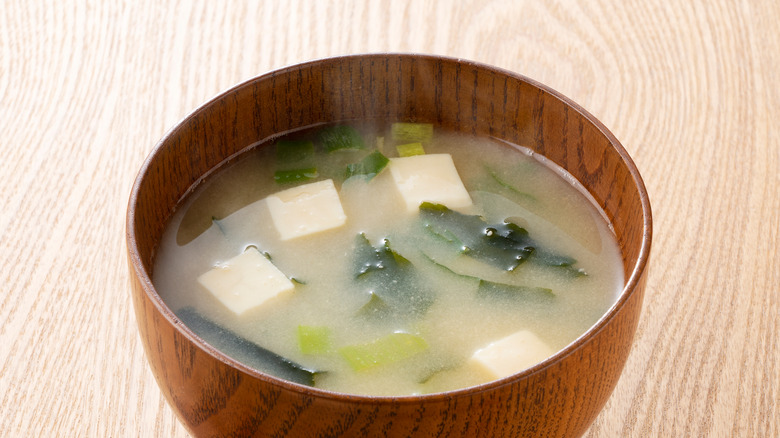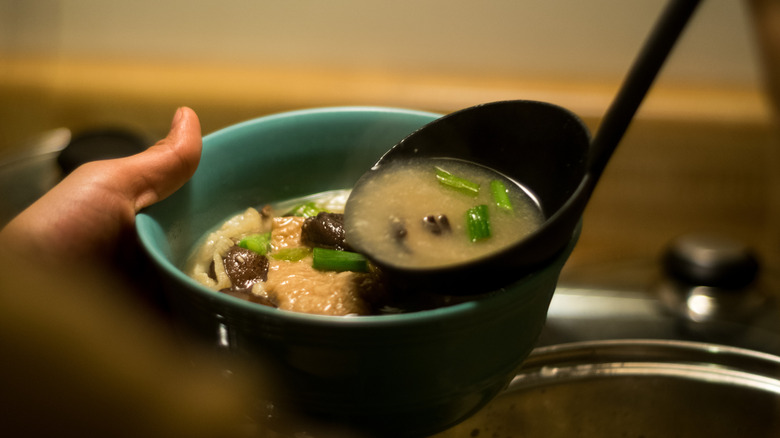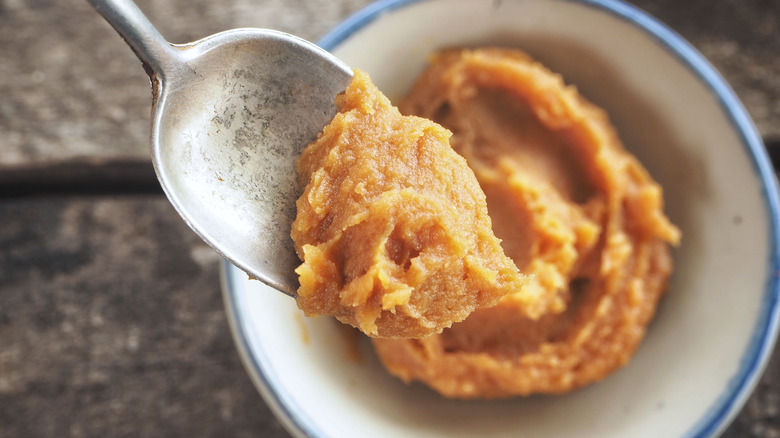The Miso Mistake To Avoid For The Best Tasting Soup
If you're looking for an easy way to add a boost of nutrition and flavor to your diet then you should be reaching for a container of miso. According to the BBC, miso is a paste that is made by fermenting soybeans and other grains. It's well regarded in both Japanese and Chinese cuisines for its ability to pack a savory punch. It's also a highly versatile ingredient that can be added to all sorts of recipes.
Miso is most commonly associated with miso soup which can serve as the basis for a hearty bowl of ramen noodles, get dressed up with napa cabbage and shrimp, or other ingredients like tofu. Miso is good for more than just soup though. It can also serve as the primary flavor in a miso vinaigrette, or as a savory glaze to go on salmon or roast meat.
As versatile as miso is as an ingredient, Miso Tasty points out that it does have some vital rules for its use. Miso is well regarded for its nutritional boost, but one common mistake can spoil many of those benefits.
Don't make this mistake
According to Miso Tasty, the number one most common mistake that inexperienced cooks make when preparing miso soup is to boil their miso. Miso paste should instead be added in at the end of preparation, and never boiled, or it will damage many of its best characteristics. Miso is well regarded for its aromatics and nutritional benefits from probiotics. Adding miso to your broth first thing and letting it boil will damage many of these qualities.
The BBC adds that many of miso's most famous nutritional benefits come courtesy of the presence of probiotics. These probiotics are a result of the long fermentation process used to make miso and have been shown to improve gut health and digestion. Healthline says that high heats often kill off these probiotic substances though, so its best to use it as a cold ingredient for the most health benefits.
Miso Tasty recommends adding the miso paste at the very end of preparing the broth to preserve these sought-after qualities. The paste can be added by using a fine strainer, or by putting the miso in a small bowl, adding a splash of lukewarm broth, and then whisking it to ensure the miso breaks down entirely before adding it back to the soup.
How miso is made
Healthline adds that beyond the healthful probiotics, miso also has plenty of other vitamins and nutrients in its nutritional profile. It's been linked to improved brain function, heart health, lower cholesterol, and lower blood pressure. The sheer number of things that miso is apparently good for is astounding. Especially when you consider its simple ingredient list.
Umami Info says that whether you buy soybean, rice, or barley miso, it is likely to be made with only three ingredients: soybeans, salt, and koji. Koji is a type of mold (Aspergillus oryzae) that is grown on different grains to produce fermented food products like miso and sake. In miso, koji spores are added to soybeans, rice, and barley to create different styles of koji that will add unique flavors to the paste. This mold is not only responsible for miso's flavor but also sparks the fermentation period that gives it such a potent nutritional profile.
Umami Info claims that during the fermentation period, the koji mold will break down the soybeans' protein structures into separate peptides and amino acids. One of those amino acids is glutamate which is understood to be the secret to the fifth taste "umami" or savory. These qualities and flavors will also change depending on how long the paste is fermented which can last six months to a whole year.


